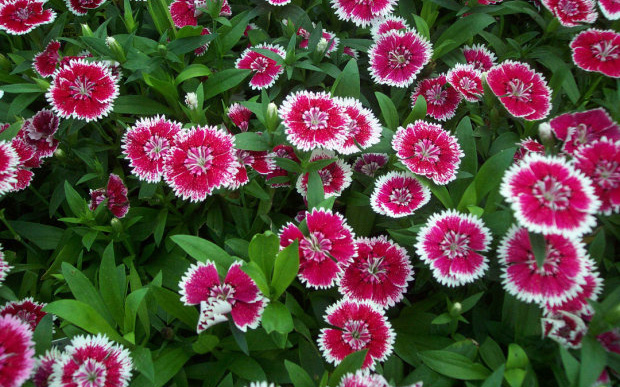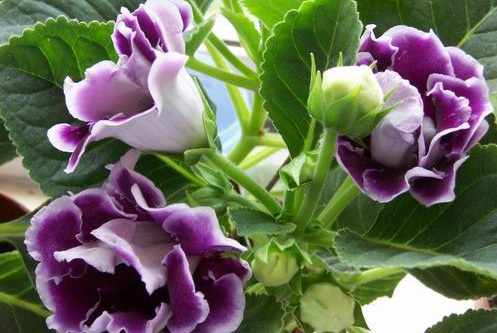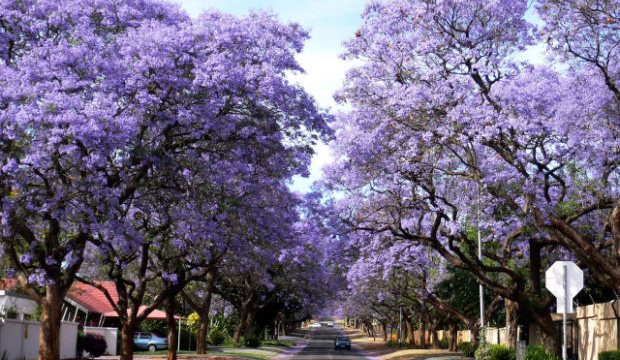Cultivation and Culture methods of Carnation
The branches of carnation flowers are as slender and green as bamboo; the flowers are light red, red and white, and the petals are rich in velvet trimmed with velvet, rich and varied colors; many varieties of flowers also have elegant fragrance. Both Li Bai and du Fu, famous poets of the Tang Dynasty, wrote poems like "carnation embroidered with Luo Yi" and "Musk Sleeping Carnation", praising the beauty of carnation. Carnation, native to eastern Asia, is a perennial herbaceous flower. It is distributed in the mountainous areas of the north and south provinces of China, which is hardy and likes fertile and moist sandy soil or rotten leaf soil of Ryukyu pine. The cultivation site should choose the terrain with plenty of sunshine and good ventilation, and avoid waterlogging most. Flowering from May to September, carnation is mainly used to decorate courtyard flower beds and flower paths, as well as a beautiful potted flower and cut flower. Sowing and propagation are the main factors, and the most suitable temperature for seed germination is 21 mi 22 degrees, which can sprout in about 5 days. The growth temperature at the seedling stage should be slightly lower to make the seedlings thrive. According to the difference of the temperature in the seedling period, it takes about 10 weeks from sowing to seedling. Family cultivation is more than at the end of autumn, direct seeding in the sunny courtyard and shelter; after winter, cover against the cold; after the next spring turns warm, the seedlings are planted and flowered in May.

It can also be sown in spring, but the growth and flowering are not as good as those sown in autumn. Cuttings can be used for propagation in warm areas. from late September to early March, sturdy and slightly stiff branches can be cut into 6 cm long cuttings, inserted into 3 cm in the sand and placed at a temperature of 20 mi 24 degrees. Keep it moist and shade properly; 2 it can take root in 3 weeks. The cultivation and cultivation method of carnation the branches of carnation are as slender and green as bamboo; the flowers have light red, red and white colors, and the petals are rich in velvet-like trimmed, velvet-like, colorful and varied; many kinds of flowers also have elegant fragrance. Both Li Bai and du Fu, famous poets of the Tang Dynasty, wrote poems like "carnation embroidered with Luo Yi" and "Musk Sleeping Carnation", praising the beauty of carnation. Carnation, native to eastern Asia, is a perennial herbaceous flower. It is distributed in the mountainous areas of the north and south provinces of China, which is hardy and likes fertile and moist sandy soil or rotten leaf soil of Ryukyu pine. The cultivation site should choose the terrain with plenty of sunshine and good ventilation, and avoid waterlogging most. Flowering from May to September, carnation is mainly used to decorate courtyard flower beds and flower paths, as well as a beautiful potted flower and cut flower. Sowing and propagation are the main factors, and the most suitable temperature for seed germination is 21 mi 22 degrees, which can sprout in about 5 days. The growth temperature at the seedling stage should be slightly lower to make the seedlings thrive. According to the difference of the temperature in the seedling period, it takes about 10 weeks from sowing to seedling. Family cultivation is more than at the end of autumn, direct seeding in the sunny courtyard and shelter; after winter, cover against the cold; after the next spring turns warm, the seedlings are planted and flowered in May. It can also be sown in spring, but the growth and flowering are not as good as those sown in autumn. Cuttings can be used for propagation in warm areas. from late September to early March, sturdy and slightly stiff branches can be cut into 6 cm long cuttings, inserted into 3 cm in the sand and placed at a temperature of 20 mi 24 degrees. Keep it moist and shade properly; 2 it can take root in 3 weeks. The management method of carnation cultivated in the courtyard is very simple. On the other hand, the culture soil for potted carnation is best prepared with 7 parts of garden soil and 3 parts of sandy soil, and the seedlings with four or five leaves are moved to a small flowerpot with a diameter of 6m and 7cm, with the growth of the seedlings. After gradually changing to a flowerpot with a caliber of about 15 cm, you don't have to cut it any more, and put the seedlings in a sunny place. During the growth period, fertilizer and water can be applied every 10 days, and the flowers will flourish. The plants can be replanted in autumn, and the new plants will grow vigorously in the following year. In winter, potted seedlings must be placed in a cool (8 / 10 degree) and sunny environment to spend the winter. In hot areas in summer, the plants withered and the ornamental value decreased greatly, so they were cultivated as biennial flowers. In the area where it is warm in winter and cool in summer, flowers can blossom all the year round when adjusting the sowing and nursery period, because it is very easy to cross naturally among varieties, and seeds are used to propagate and the offspring are changed. in order to maintain the good characters of varieties, we should pay attention to the proper distance between different varieties in culture. to prevent the mixing of unique characters of varieties, it is necessary to strictly "select the good and discard the inferior" and "select pure and discard miscellaneous" when collecting seeds. How to cultivate Carnation and the cultivation and Management methods of Carnation
The carnation is clever and lovely, and the flowers are colorful, but its appearance is a very ordinary ornamental flower. Although it is low-key, it is also loved by people. It may be that people like the spirit of carnation. Then there will still be some minor problems in the process of cultivating carnation. So how to cultivate carnation flowers? let's introduce the cultivation and management methods of carnation flowers.
How to cultivate Carnation Flower
Carnation is a perennial herbaceous flower with weak persistent roots, which is often cultivated as an annual or biennial plant. Potted carnation requires adequate basal fertilizer, 2-3 plants per pot. Seedlings grow to 15 cm high to remove the terminal bud, promote its branches, and then pay attention to the appropriate removal of axillary buds, otherwise more branches, will make nutrients scattered and flowering small, appropriate removal of axillary buds to concentrate nutrients, can promote large and colorful flowers. During the growth period, it should be placed in the sunny, well-ventilated place to maintain, keep the basin soil moist, and apply mature thin liquid fertilizer about every 10 days. There are too many Rain Water in summer, pay attention to drainage and loosen the soil. Phyllostachys pubescens is easy to cross, and those who keep the seeds should be planted in isolation. Some leaf axillary buds should be removed in time before flowering, mainly to ensure that the top buds bloom. It is advisable to water less in winter. If the temperature is kept at 5-8 degrees, it will blossom continuously in winter and spring.
Cultivation and Management methods of Carnation Flower
1. Planting in August with sufficient fertilizer, deep ploughing and fine raking, leveling and bedding. When the sowing seedlings grow 1-2 true leaves and grow 3-4 true leaves, they are transplanted. The plant spacing is 15 cm and the row spacing is 20 cm. Watering after transplanting and spraying new high-fat membrane to improve the survival rate.
two。 The suitable temperature for light and temperature growth is 15-20 ℃. In winter, the temperature should be kept above 12 ℃ in the greenhouse. The growing period requires sufficient light, placed in a sunny place, and it is appropriate to scatter light in summer to avoid hot sun exposure. When the temperature is high, it should be shaded and cooled down.
3. Watering and fertilizing watering should be controlled whether it is dry or not. When the height of the plant is 10 cm, it will be transplanted again. For the carnation sown in autumn, the carnation was watered with antifreeze water from November to December and returned to green water in the spring of the second year. The whole growing period should be topdressing 2: 3 to catch mature human feces, urine or cake fertilizer. If you want to bloom more, you can pick the heart and make it more branched, you must remove the axillary buds in time to reduce nutrient consumption. Carnation flowers can blossom again after pruning.
- Prev

Cultivation and culture methods of paulownia
In the hot summer, many people's favorite potted flowers can not stand the heat, some half-dead poor growth, some simply fallen leaves into dormancy. However, the big paulownia from tropical South America and Brazil is not afraid of the heat and heat. It can not only fight the high temperature and the heat, but also grow proudly.
- Next

Cultivation and culture management method of jacaranda jacaranda
Jacaranda is native to tropical America. It likes warm, humid and sunny environment and is not resistant to frost and snow. The suitable temperature for growth is 22 to 30℃. If the temperature in winter is lower than 15℃, the growth will stagnate. If it is lower than 3 to 5℃, there will be cold damage. If the temperature in summer is higher than 32℃, the growth will be inhibited. Likes light, can be half yin
Related
- Fuxing push coffee new agricultural production and marketing class: lack of small-scale processing plants
- Jujube rice field leisure farm deep ploughing Yilan for five years to create a space for organic food and play
- Nongyu Farm-A trial of organic papaya for brave women with advanced technology
- Four points for attention in the prevention and control of diseases and insect pests of edible fungi
- How to add nutrient solution to Edible Fungi
- Is there any good way to control edible fungus mites?
- Open Inoculation Technology of Edible Fungi
- Is there any clever way to use fertilizer for edible fungus in winter?
- What agents are used to kill the pathogens of edible fungi in the mushroom shed?
- Rapid drying of Edible Fungi

